Controllable Molecular Packing Motif and Overlap Type in Organic Nanomaterials for Advanced Optical Properties
Abstract
:1. Introduction
2. Experimental and Computational Section
3. Results
3.1. In Situ XRD Study on the Molecular Packing Transition
3.2. XRD and TGA Analyses of CuPc Crystals Annealed at Different Temperature
3.3. Morphology Transition of CuPc Crystals
3.4. Vibrational and Optical Properties of CuPc Crystals
4. Conclusions
Acknowledgments
Author Contributions
Conflicts of Interest
References
- Zhang, X.; Jie, J.; Deng, W.; Shang, Q.; Wang, J.; Wang, H.; Chen, X.; Zhang, X. Alignment and Patterning of Ordered Small-Molecule Organic Semiconductor Micro-/Nanocrystals for Device Applications. Adv. Mater. 2016, 28, 2475–2503. [Google Scholar] [CrossRef] [PubMed]
- Min, S.Y.; Kim, T.S.; Lee, Y.; Cho, H.; Xu, W.; Lee, T.W. Organic nanowire fabrication and device applications. Small 2015, 11, 45–62. [Google Scholar] [CrossRef] [PubMed]
- Zhang, C.; Chen, P.; Hu, W. Organic field-effect transistor-based gas sensors. Chem. Soc. Rev. 2015, 44, 2087–2107. [Google Scholar] [CrossRef] [PubMed]
- Bromley, S.T.; Mas-Torrent, M.; Hadley, P.; Rovira, C. Importance of intermolecular interactions in assessing hopping mobilities in organic field effect transistors: Pentacene versus dithiophene-tetrathiafulvalene. J. Am. Chem. Soc. 2004, 126, 6544–6545. [Google Scholar] [CrossRef] [PubMed]
- Da Silva Filho, D.A.; Kim, E.G.; Brédas, J.L. Transport Properties in the Rubrene Crystal: Electronic Coupling and Vibrational Reorganization Energy. Adv. Mater. 2005, 17, 1072–1076. [Google Scholar] [CrossRef]
- Sundar, V.C.; Zaumseil, J.; Podzorov, V.; Menard, E.; Willett, R.L.; Someya, T.; Gershenson, M.E.; Rogers, J.A. Elastomeric transistor stamps: Reversible probing of charge transport in organic crystals. Science 2004, 303, 1644–1646. [Google Scholar] [CrossRef] [PubMed]
- Gierschner, J.; Ehni, M.; Egelhaaf, H.J.; Milian Medina, B.; Beljonne, D.; Benmansour, H.; Bazan, G.C. Solid-state optical properties of linear polyconjugated molecules: Pi-stack contra herringbone. J. Chem. Phys. 2005, 123, 144914. [Google Scholar] [CrossRef] [PubMed]
- Varghese, S.; Das, S. Role of Molecular Packing in Determining Solid-State Optical Properties of π-Conjugated Materials. J. Phys. Chem. Lett. 2011, 2, 863–873. [Google Scholar] [CrossRef] [PubMed]
- Giri, G.; Verploegen, E.; Mannsfeld, S.C.B.; Atahan-Evrenk, S.; Kim, D.H.; Lee, S.Y.; Becerril, H.A.; Aspuru-Guzik, A.; Toney, M.F.; Bao, Z. Tuning charge transport in solution-sheared organic semiconductors using lattice strain. Nature 2011, 480, 504–508. [Google Scholar] [CrossRef] [PubMed] [Green Version]
- Bredas, J.L.; Calbert, J.P.; da Silva Filho, D.A.; Cornil, J. Organic semiconductors: A theoretical characterization of the basic parameters governing charge transport. Proc. Natl. Acad. Sci. USA 2002, 99, 5804–5809. [Google Scholar] [CrossRef] [PubMed]
- Wang, H.; Mauthoor, S.; Din, S.; Gardener, J.A.; Chang, R.; Warner, M.; Aeppli, G.; McComb, D.W.; Ryan, M.P.; Wu, W.; et al. Ultralong copper phthalocyanine nanowires with new crystal structure and broad optical absorption. ACS Nano 2010, 4, 3921–3926. [Google Scholar] [CrossRef] [PubMed]
- Becke, A.D. Density-functional thermochemistry. III. The role of exact exchange. J. Chem. Phys. 1993, 98, 5648–5652. [Google Scholar] [CrossRef]
- Ditchfield, R.; Hehre, W.J.; Pople, J.A. Self-Consistent Molecular-Orbital Methods. IX. An Extended Gaussian-Type Basis for Molecular-Orbital Studies of Organic Molecules. J. Chem. Phys. 1971, 54, 724–728. [Google Scholar] [CrossRef]
- Frisch, M.J.; Trucks, G.W.; Schlegel, H.B.; Scuseria, G.E.; Robb, M.A.; Cheeseman, J.R.; Montgomery, J.A., Jr.; Vreven, T.; Kudin, K.N.; Burant, J.C.; et al. Gaussian 03 (Gaussian, Inc., 2003). Available online: http://www.gaussian.com/g_tech/g_ur/g09help.htm (accessed on 9 November 2017).
- Serri, M.; Wu, W.; Fleet, L.R.; Harrison, N.M.; Hirjibehedin, C.F.; Kay, C.W.; Fisher, A.J.; Aeppli, G.; Heutz, S. High-temperature antiferromagnetism in molecular semiconductor thin films and nanostructures. Nat. Commun. 2014, 5. [Google Scholar] [CrossRef] [PubMed]
- Wang, X.; Wu, W.; Ju, H.; Zou, T.; Qiao, Z.; Gong, H.; Wang, H. Experimental and theoretical studies of the structure and optical properties of nickel phthalocyanine nanowires. Mater. Res. Express 2016, 3. [Google Scholar] [CrossRef]
- Wu, W.; Harrison, N.; Fisher, A. Electronic structure and exchange interactions in cobalt-phthalocyanine chains. Phys. Rev. B 2013, 88, 024426. [Google Scholar] [CrossRef]
- Wu, W.; Kerridge, A.; Harker, A.H.; Fisher, A.J. Structure-dependent exchange in the organic magnets Cu(II)Pc and Mn(II)Pc. Phys. Rev. B 2008, 77. [Google Scholar] [CrossRef] [Green Version]
- Muscat, J.; Wander, A.; Harrison, N.M. On the prediction of band gaps from hybrid functional theory. Chem. Phys. Lett. 2001, 342, 397–401. [Google Scholar] [CrossRef]
- Illas, F.; Moreira, I.P.R.; de Graaf, C.; Barone, V. Magnetic coupling in biradicals, binuclear complexes and wide-gap insulators: A survey of ab initio wave function and density functional theory approaches. Theor. Chem. Acc. Theory Comput. Model. (Theor. Chim. Acta) 2000, 104, 265–272. [Google Scholar] [CrossRef]
- Beynon, J.H.; Humphries, A.R. The enthalpy difference between α- and β-copper phthalocyanine measured with an isothermal calorimeter. Trans. Faraday Soc. 1955, 51, 1065–1071. [Google Scholar] [CrossRef]
- Defeyt, C.; Vandenabeele, P.; Gilbert, B.; Van Pevenage, J.; Cloots, R.; Strivay, D. Contribution to the identification of α-, β- and ε-copper phthalocyanine blue pigments in modern artists’ paints by X-ray powder diffraction, attenuated total reflectance micro-fourier transform infrared spectroscopy and micro-Raman spectroscopy. J. Raman Spectrosc. 2012, 43, 1772–1780. [Google Scholar] [CrossRef]
- Basova, T.V.; Kiselev, V.G.; Schuster, B.-E.; Peisert, H.; Chassé, T. Experimental and theoretical investigation of vibrational spectra of copper phthalocyanine: Polarized single-crystal Raman spectra, isotope effect and DFT calculations. J. Raman Spectrosc. 2009, 40, 2080–2087. [Google Scholar] [CrossRef]
- Kolesov, B.A.; Basova, T.V.; Igumenov, I.K. Determination of the orientation of CuPc film by raman spectroscopy. Thin Solid Films 1997, 304, 166–169. [Google Scholar] [CrossRef]
- McAfee, T.; Hoffman, B.C.; You, X.; Atkin, J.M.; Ade, H.; Dougherty, D.B. Morphological, Optical, and Electronic Consequences of Coexisting Crystal Orientations in β-Copper Phthalocyanine Thin Films. J. Phys. Chem. C 2016, 120, 18616–18621. [Google Scholar] [CrossRef]
- Ghorai, U.K.; Mazumder, N.; Mamgain, H.; Roy, R.; Saha, S.; Chattopadhyay, K.K. Raman Spectroscopic Observation of Gradual Polymorphic Transition and Phonon Modes in CuPc Nanorod. J. Phys. Chem. C 2017, 121, 6323–6328. [Google Scholar] [CrossRef]
- Kuwahara, M.; Mizutani, G.; Sakamoto, K.; Ushioda, S. Absolute Raman scattering cross sections of surface adsorbed Cu-phthalocyanine molecules. Surf. Sci. 1991, 242, 544–548. [Google Scholar] [CrossRef]
- Prabakaran, R.; Fortunato, E.; Martins, R.; Ferreira, I. Fabrication and characterization of hybrid solar cells based on copper phthalocyanine/porous silicon. J. Non-Cryst. Solids 2008, 354, 2892–2896. [Google Scholar] [CrossRef]
- Verma, D.; Dash, R.; Katti, K.S.; Schulz, D.L.; Caruso, A.N. Role of coordinated metal ions on the orientation of phthalocyanine based coatings. Spectrochim. Acta Part A Mol. Biomol. Spectrosc. 2008, 70, 1180–1186. [Google Scholar] [CrossRef] [PubMed]
- Li, D.; Peng, Z.; Deng, L.; Shen, Y.; Zhou, Y. Theoretical studies on molecular structure and vibrational spectra of copper phthalocyanine. Vib. Spectrosc. 2005, 39, 191–199. [Google Scholar] [CrossRef]
- Achar, B.N.; Lokesh, K.S. Studies on polymorphic modifications of copper phthalocyanine. J. Solid State Chem. 2004, 177, 1987–1993. [Google Scholar] [CrossRef]
- Kendall, D.N. Identification of Polymorphic Forms of Crystals by Infrared Spectroscopy. Anal. Chem. 1953, 25, 382–389. [Google Scholar] [CrossRef]
- Ough, E.A.; Stillman, M.J.; Creber, K.A.M. Absorption and magnetic circular dichroism spectra of nitrogen homologues of magnesium and zinc phthalocyanine. Can. J. Chem. 1993, 71, 1898–1909. [Google Scholar] [CrossRef]
- Karan, S.; Basak, D.; Mallik, B. Copper phthalocyanine nanoparticles and nanoflowers. Chem. Phys. Lett. 2007, 434, 265–270. [Google Scholar] [CrossRef]
- Karan, S.; Mallik, B. Effects of annealing on the morphology and optical property of copper (II) phthalocyanine nanostructured thin films. Solid State Commun. 2007, 143, 289–294. [Google Scholar] [CrossRef]
- Roy, D.; Das, N.M.; Shakti, N.; Gupta, P.S. Comparative study of optical, structural and electrical properties of zinc phthalocyanine Langmuir–Blodgett thin film on annealing. RSC Adv. 2014, 4, 42514–42522. [Google Scholar] [CrossRef]
- Mack, J.; Stillman, M.J. Assignment of the Optical Spectra of Metal Phthalocyanine Anions. Inorg. Chem. 1997, 36, 413–425. [Google Scholar] [CrossRef]
- Mack, J.; Stillman, M.J. Transition Assignments in the Ultraviolet−Visible Absorption and Magnetic Circular Dichroism Spectra of Phthalocyanines. Inorg. Chem. 2001, 40, 812–814. [Google Scholar] [CrossRef] [PubMed]
- Davidson, A.T. The effect of the metal atom on the absorption spectra of phthalocyanine films. J. Chem. Phys. 1982, 77, 168. [Google Scholar] [CrossRef]
- Chen, Q.; Gu, D.; Shu, J.; Tang, X.; Gan, F. Optical and recording properties of copper phthalocyanine films. Mater. Sci. Eng. B 1994, 25, 171–174. [Google Scholar] [CrossRef]
- Jungyoo, E.; Kim, S.; Lim, E.; Lee, K.; Cha, D.; Friedman, B. Effects of substrate temperature on copper(II) phthalocyanine thin films. Appl. Surf. Sci. 2003, 205, 274–279. [Google Scholar] [CrossRef]
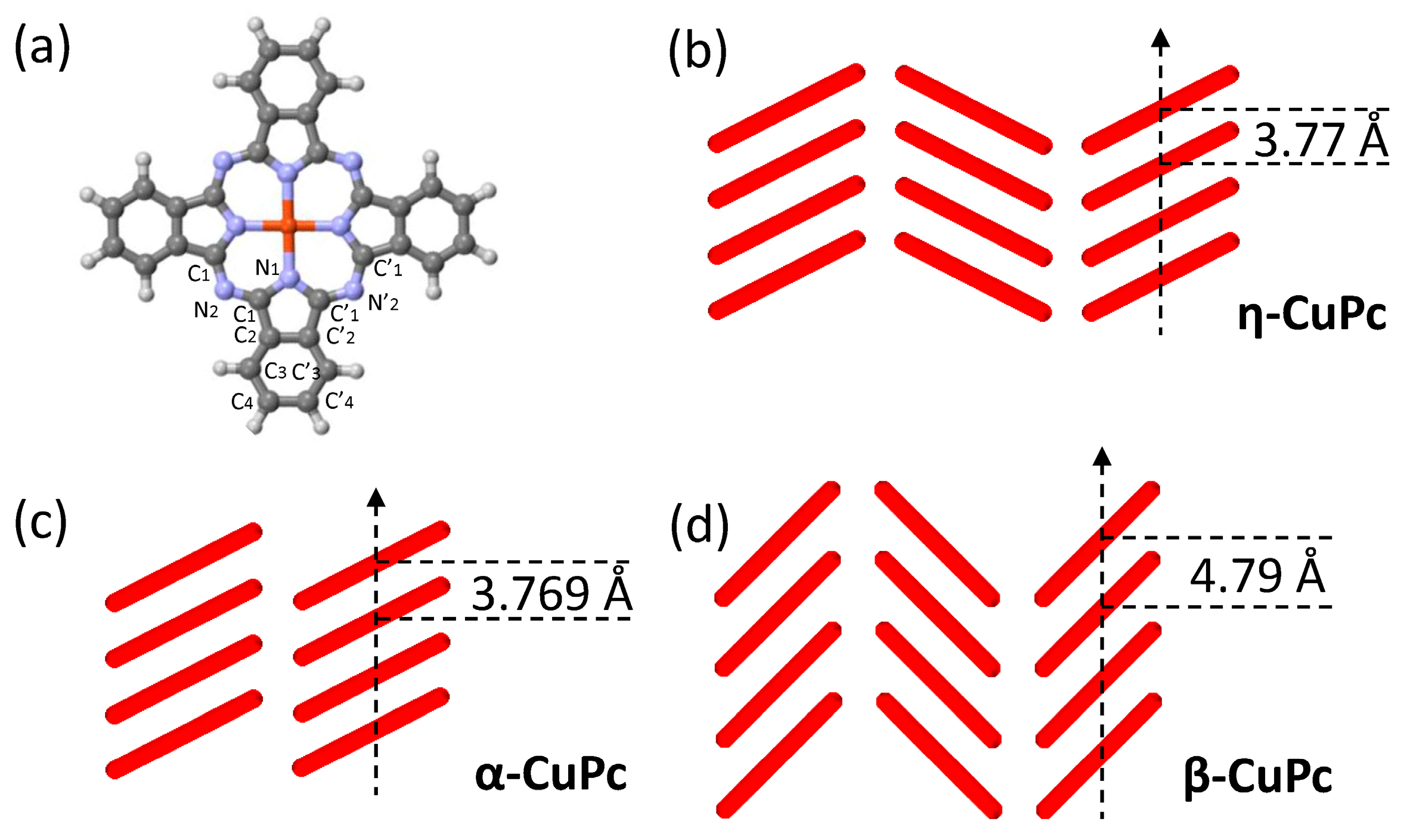
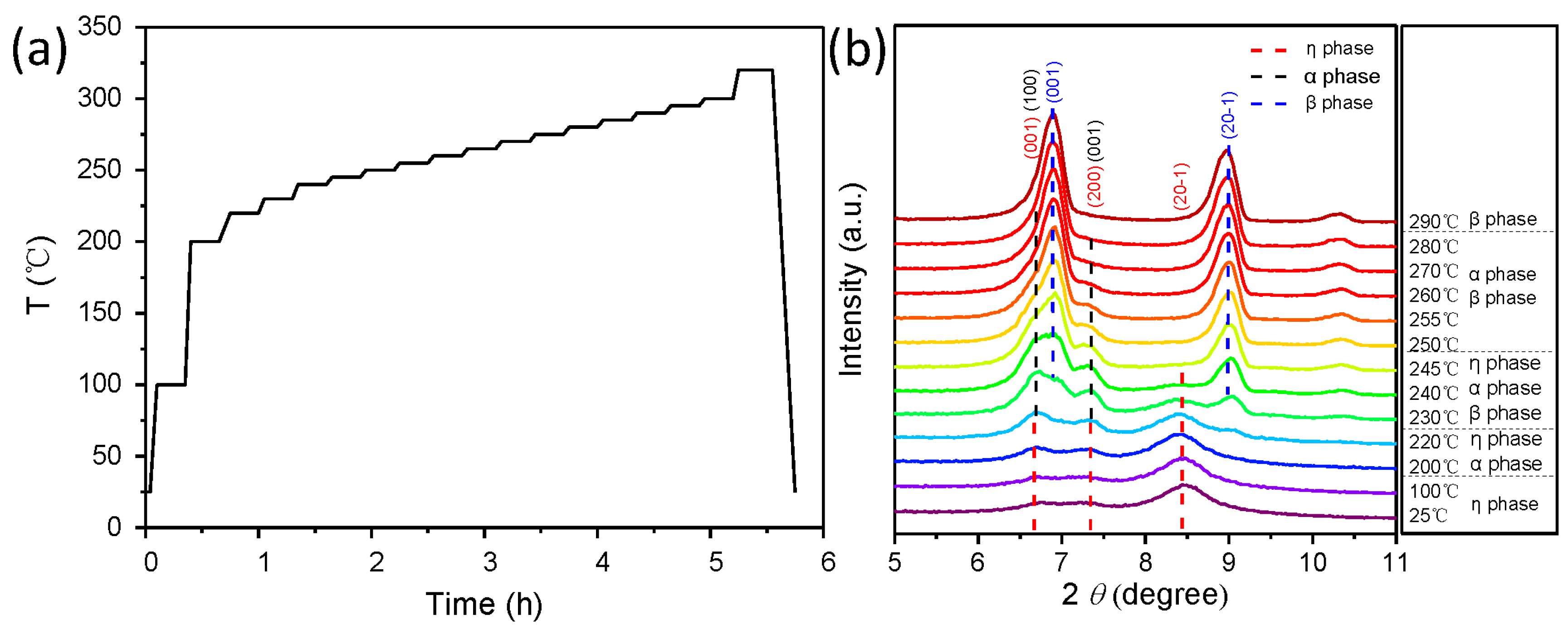

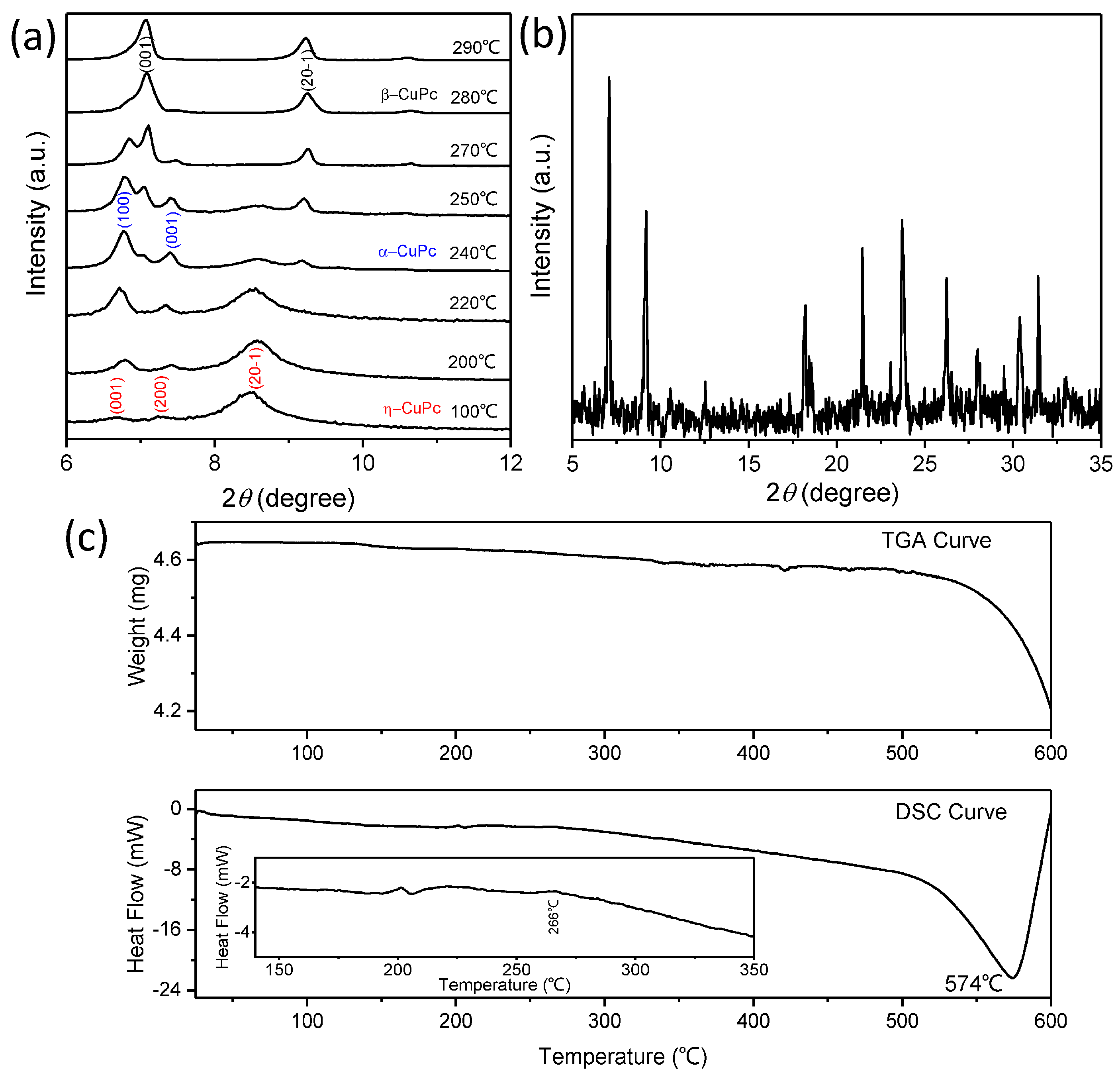
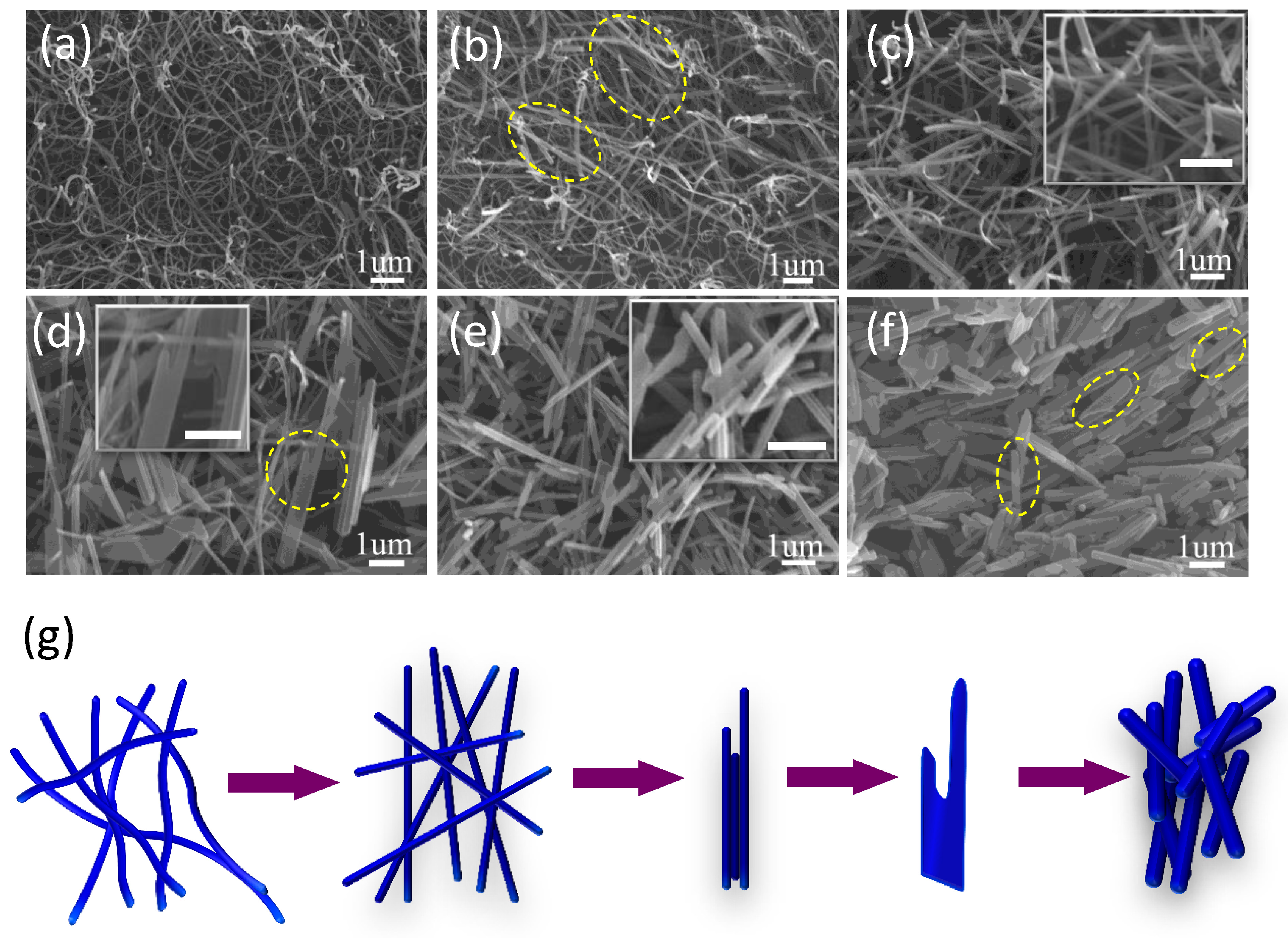
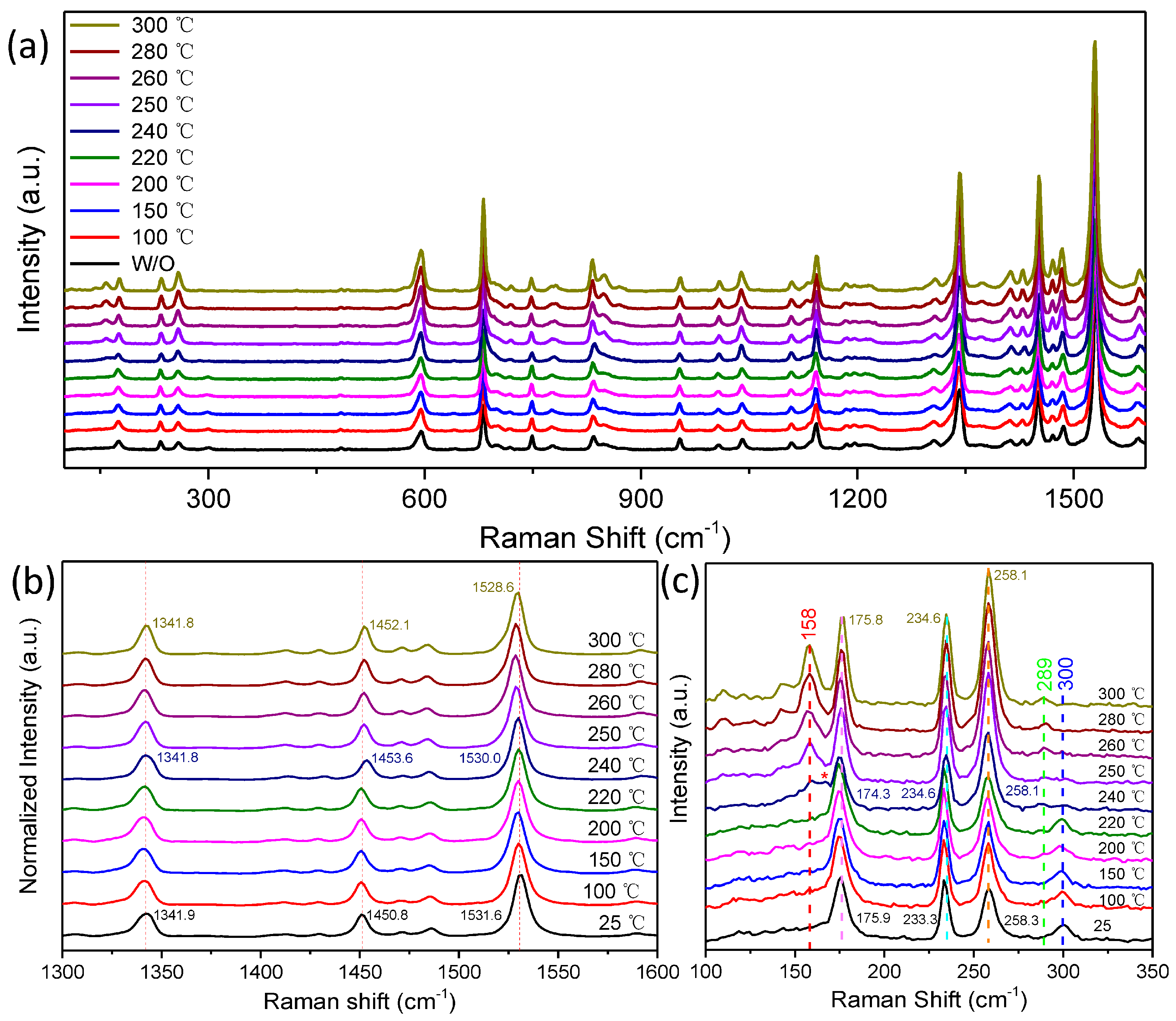
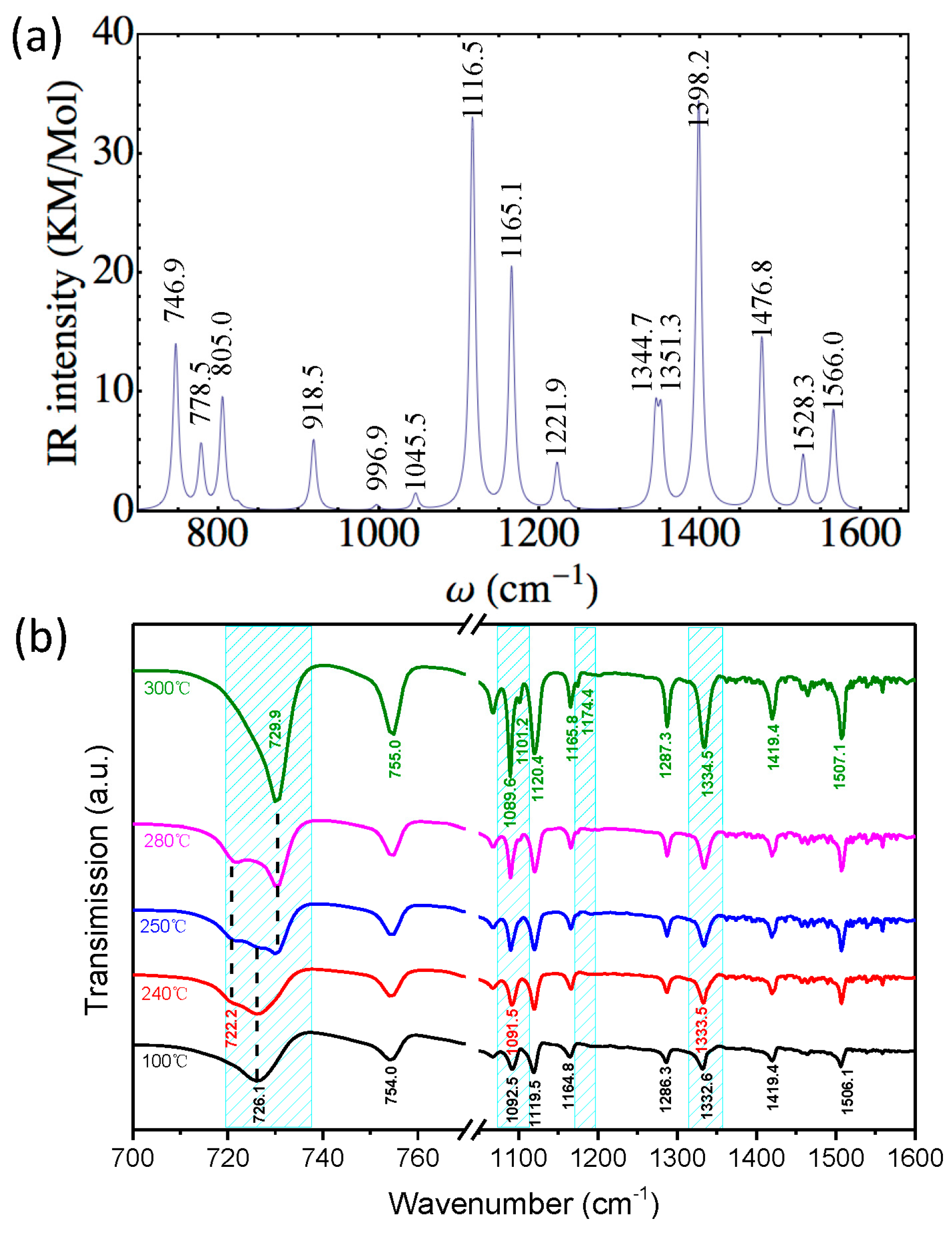
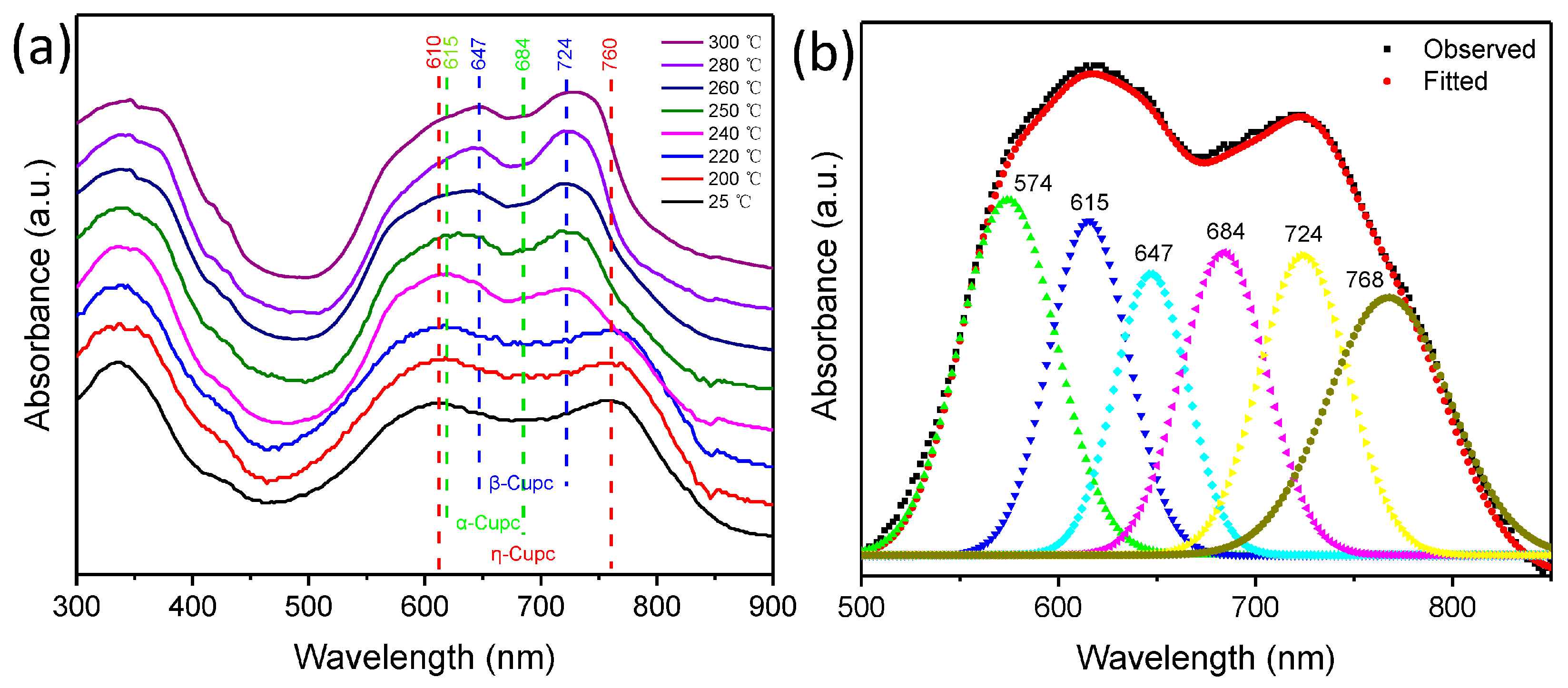
© 2018 by the authors. Licensee MDPI, Basel, Switzerland. This article is an open access article distributed under the terms and conditions of the Creative Commons Attribution (CC BY) license (http://creativecommons.org/licenses/by/4.0/).
Share and Cite
Zou, T.; Wang, X.; Ju, H.; Zhao, L.; Guo, T.; Wu, W.; Wang, H. Controllable Molecular Packing Motif and Overlap Type in Organic Nanomaterials for Advanced Optical Properties. Crystals 2018, 8, 22. https://doi.org/10.3390/cryst8010022
Zou T, Wang X, Ju H, Zhao L, Guo T, Wu W, Wang H. Controllable Molecular Packing Motif and Overlap Type in Organic Nanomaterials for Advanced Optical Properties. Crystals. 2018; 8(1):22. https://doi.org/10.3390/cryst8010022
Chicago/Turabian StyleZou, Taoyu, Xiaoyan Wang, Haidong Ju, Li Zhao, Tingting Guo, Wei Wu, and Hai Wang. 2018. "Controllable Molecular Packing Motif and Overlap Type in Organic Nanomaterials for Advanced Optical Properties" Crystals 8, no. 1: 22. https://doi.org/10.3390/cryst8010022



